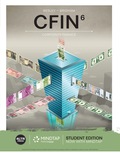
Concept explainers
Problem 10-22A Effects of straight-line versus accelerated
Harper Electronics is considering investing in manufacturing equipment expected to cost $250,000. The equipment has an estimated useful life of four years and a salvage value of $25,000. It is expected to produce incremental cash revenues of $125,000 per year. Harper has an effective income tax rate of 30 percent and a desired rate of return of 10 percent.
Required
Round your financial figures to the nearest dollar and all other figures to two decimal points.
- a. Determine the
net present value and the present value index of the investment, assuming that Harper uses straight-line depreciation for financial and income tax reporting. - b. Determine the net present value and the present value index of the investment, assuming that Harper uses double-declining-balance depreciation for financial and income tax reporting.
- c. Why do the net present values computed in Requirements a and b differ?
- d. Determine the payback period and unadjusted rate of
return (use average investment ), assuming that Harper uses straight-line depreciation. - e. Determine the payback period and unadjusted rate of return (use average investment), assuming that Harper uses double-declining-balance depreciation. (Note: Use average annual
cash flow when computing the payback period and average annual income when determining the unadjusted rate of return.) - f. Why are there no differences in the payback periods or unadjusted
rates of return computed in Requirements d and e?
a.
Ascertain the net present value and the present value index of the investment, assuming that
Company H uses straight-line depreciation for financial and income tax reporting.
Explanation of Solution
Net present value method:
Net present value method is the method which is used to compare the initial cash outflow of investment with the present value of its cash inflows. In the net present value, the interest rate is desired by the business based on the net income from the investment, and it is also called as the discounted cash flow method.
Ascertain the net present value of the investment under straight line method as follows:
| Particulars | Amount ($) (a) | PV Factor (b) | Present value |
| Present value of net cash inflows (1) | $104,375 | 3.1698651 | $330,855 |
| Add: Present value of Salvage value | 25,000 | 0.6830132 | 17,075 |
| Less: Initial investment | (250,000) | ||
| Net present value | $ 97,930 |
Table (1)
Note:
- The Present value of an ordinary annuity of $1 for 4 years at 10% is 3.169865 (refer table 2 in appendix).
- The present value of $1 for 4th year at 10% is 0. 0.683013 (refer table 1 in appendix).
Working notes:
Calculate the amount of cash flow under straight line for each year:
| Particulars | Year 1 | Year 2 | Year 3 | Year 4 |
| Revenue | 125,000 | 125,000 | 125,000 | 125,000 |
| Less: Depreciation (3) | 56,250 | 56,250 | 56,250 | 56,250 |
| Income before tax | 68,750 | 68,750 | 68,750 | 68,750 |
| Less: Income tax (2) | 20,625 | 20,625 | 20,625 | 20,625 |
| Net Income | 48,125 | 48,125 | 48,125 | 48,125 |
| Add: Depreciation | 56,250 | 56,250 | 56,250 | 56,250 |
| Cash flow | 104,375 | 104,375 | 104,375 | 104,375 |
Table (2)
(1)
Calculate the amount of income tax expense:
(2)
Ascertain the depreciation expenses under straight line as follows:
(3)
Ascertain the present value index of the investment as follows:
Working notes:
Calculate the present value of cash inflows:
| Particulars | Amount ($) (a) | PV Factor (b) | Present value |
| Present value of cash inflows | $125,000 | 3.1698651 | $396,233 |
| Add: Present value of Salvage value | 25,000 | 0.6830132 | 17,075 |
| Total PV of cash inflows | $413,308 |
Table (3)
(4)
Note:
- The Present value of an ordinary annuity of $1 for 4 years at 10% is 3.169865 (refer table 2 in appendix).
- The present value of $1 for 4th year at 10% is 0. 0.683013 (refer table 1 in appendix).
Calculate the present value of cash outflows:
| Particulars | Amount ($) (a) | PV Factor (b) | Present value |
| Present value of tax payments (2) | $20,625 | 3.1698651 | $65,378 |
| Add: Initial investment | 250,000 | ||
| Total PV of cash outflows | $315,378 |
Table (4)
(5)
Note:
- The Present value of an ordinary annuity of $1 for 4 years at 10% is 3.169865 (refer table 2 in appendix).
b.
Ascertain the net present value and the present value index of the investment, assuming that
Company H uses double-declining-balance depreciation for financial and income tax reporting.
Explanation of Solution
Ascertain the net present value of the investment under double declining balance method as follows:
| Particulars | Amount ($) (a) | PV Factor (b) | Present value |
| Present value of net cash inflows: | |||
| Year 1 | 125,000 | 0.909091 | 113,636 |
| Year 2 | 106,250 | 0.826446 | 87,810 |
| Year 3 | 96,875 | 0.751315 | 72,784 |
| Year 4 | 89,375 | 0.683013 | 61,044 |
| Salvage value | 25,000 | 0.683013 | 17,075 |
| Less: Present value of cash outflows | 250,000 | ||
| Net present value | 102,349 |
Table (5)
Note:
- For the present value factors refer table 1 in appendix.
Working notes:
Calculate the amount of cash flow under double declining method for each year:
| Particulars | Year 1 | Year 2 | Year 3 | Year 4 |
| Revenue | 125,000 | 125,000 | 125,000 | 125,000 |
| Less: Depreciation (6) | 125,000 | 62,500 | 31,250 | 6,250 |
| Income before tax (7) | - | 62,500 | 93,750 | 118,750 |
| Less: Income tax | - | 18,750 | 28,125 | 35,625 |
| Net Income | - | 43,750 | 65,625 | 83,125 |
| Add: Depreciation | 125,000 | 62,500 | 31,250 | 6,250 |
| Cash flow | 125,000 | 106,250 | 96,875 | 89,375 |
Table (6)
Compute the depreciation expenses under double declining method for each year:
| Year | Depreciation expenses |
| Year 1 | |
| Year 2 | |
| Year 3 | |
| Year 4 |
Table (7)
(6)
Compute the depreciation rate applied each year:
Useful life = 4 years
Note: Use 100% to represent depreciation in percentage. Multiply the depreciation rate with 2 as it is a double-declining method.
Compute the income tax expenses under double declining method for each year:
| Year | Income tax expenses |
| Year 2 | |
| Year 3 | |
| Year 4 |
Table (8)
(7)
Ascertain the present value index of the investment as follows:
Working notes:
Calculate the present value of cash outflows:
| Particulars | Amount ($) (a) | PV Factor (b) | Present value |
| Year 1 income tax payment | 0 | 0.9090911 | $0 |
| Year 2 income tax payment (7) | 18,750 | 0.8264462 | 15,496 |
| Year 3 income tax payment (7) | 28,125 | 0.7513153 | 21,131 |
| Year 4 income tax payment (7) | 35,625 | 0.6830134 | 24,332 |
| Add: Initial investment | 250,000 | ||
| Total PV of cash outflows | $310,959 |
Table (9)
(8)
Note:
- For the value of Present value factor refer table 1 in appendix.
c.
Explain the reason for the difference in the net present values computed.
Explanation of Solution
In this case, the net present value and the present value index under double-declining-balance depreciation are higher because the accelerated depreciation delays the cash payment of taxes.
d.
Ascertain the payback period and unadjusted rate of return (use average investment), assuming that Company H uses straight-line depreciation.
Explanation of Solution
The annual rate of return method:
The annual rate of return is the amount of income which is earned over the life of the investment. It is used to measure the annual income as a percent of the annual investment of the business, and it is also known as the accounting rate of return.
Payback period:
Payback period is the expected time period which is required to recover the cost of investment. It is one of the capital investment method used by the management to evaluate the proposal of long-term investment (fixed assets) of the business.
Ascertain the payback period under straight line method as follows:
Ascertain the unadjusted rate of return under straight line method as follows:
e.
Determine the payback period and unadjusted rate of return (use average investment), assuming that company H uses double-declining-balance depreciation.
Explanation of Solution
The annual rate of return method:
The annual rate of return is the amount of income which is earned over the life of the investment. It is used to measure the annual income as a percent of the annual investment of the business, and it is also known as the accounting rate of return.
Payback period:
Payback period is the expected time period which is required to recover the cost of investment. It is one of the capital investment method used by the management to evaluate the proposal of long-term investment (fixed assets) of the business.
Ascertain the payback period under double declining method as follows:
Ascertain the unadjusted rate of return under double declining method as follows:
f.
Explain the reason why there are no differences in the payback periods or unadjusted rates of return computed in Requirements d and e.
Explanation of Solution
In this case, there are no differences in the payback period or in the unadjusted rates of return under both straight-line and double-declining-balance depreciation methods, because under both methods the overall cash flow and net income remains same.
Want to see more full solutions like this?
Chapter 16 Solutions
Survey Of Accounting
- 1. Using the Sales vs Revenue by Quarter in 2022 visualization, what trends are being shown between sales and revenue? a. Sales was variable for each quarter, but revenue decreased every quarter. b. Sales decreased every quarter, but revenue was variable for each quarter. c. Revenue was higher than sales for each quarter. d. Revenue was lower than sales for only the first two quarters.arrow_forwardI need help with this financial accounting problem using accurate calculation methods.arrow_forwardCan you provide the valid approach to solving this financial accounting question with suitable standards?arrow_forward
- I am searching for the correct answer to this general accounting problem with proper accounting rules.arrow_forwardPlease explain the solution to this general accounting problem with accurate principles.arrow_forwardPlease provide the answer to this general accounting question using the right approach.arrow_forward
